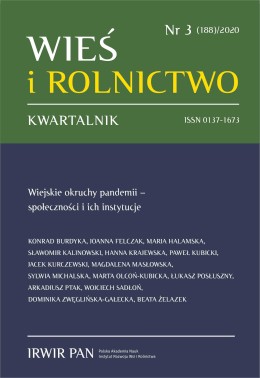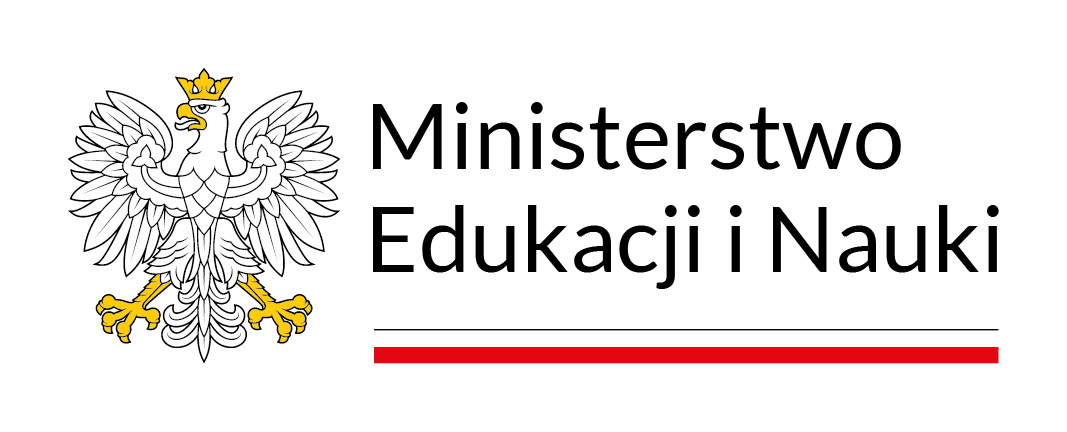Od paniki do negacji: zmiana postaw wobec COVID-19
DOI:
https://doi.org/10.53098/wir032020/03Słowa kluczowe:
COVID-19, badania ankietowe, ekonomia behawioralnaAbstrakt
W artykule poruszono problem przemian postaw ludności w kontekście COVID-19. Dokonano w nim próby pokazania ewolucji odczuć respondentów badań w wyniku przybliżania się i oddalania ryzyka koronawirusa. Omówiono wyniki próby badawczej oraz przyczyny jej deformacji w poszczególnych etapach badań. Dokonano również analizy zmian w zachowaniach społeczeństwa, w tym ścieżki przechodzenia do negacji i adaptacji, zwracając uwagę zarówno na powszednienie sytuacji, jak i tworzenie się warunków do „nowej rzeczywistości”. Podstawą analiz były badania prowadzone od kwietnia do września 2020 r., w ramach projektu badawczego „Moja sytuacja w czasie koronawirusa”. Analizy przeprowadzone w artykule zmierzają do udzielenia odpowiedzi na pytanie: „Jak przybliżanie się i oddalanie zagrożenia koronawirusem wpływa na poczucie strachu i negacji, ale również zmieniało strukturę grupy badawczej?”.
Bibliografia
Asmundson G.J.G., Taylor S. (2020). Coronaphobia: Fear and the 2019-nCoV outbreak. Journal of Anxiety Disorders, 70, 102196. DOI: https://doi.org/10.1016/j.janxdis.2020.102196
Barsade S.G., Coutifaris C.G., Pillemer J. (2018). Emotional contagion in organizational life. Research in Organizational Behavior, 38, 137–151. DOI: https://doi.org/10.1016/j.riob.2018.11.005
Batorski D., Olcoń-Kubicka M. (2006). Prowadzenie badań przez internet – podstawowe zagadnienia metodologiczne. Studia Socjologiczne, 3 (182), 99–132.
Bauman Z. (2000). Płynna nowoczesność. Kraków: Wydawnictwo Literackie.
Burke K. (1969). A Rhetoric of Motivies. Berkeley: University of California Press. DOI: https://doi.org/10.1525/9780520353237
Cassandro D. (2020). Siamo in guerra! Il coronavirus e le sue metafore [We are at war. The Coronavirus and its metaphors]. L’Internazionale, Retrieved 15th of April, https://www.internazionale.it/opinione/daniele-cassandro/2020/03/22/coronavirus-metafore-guerra (dostęp: 10.10.2020).
Charycka B., Gumkowska M. (2019). Kondycja organizacji pozarządowych. Warszawa: Stowarzyszenie Klon-Jawor.
Coombs W.T., Fediuk T., Holladay S.J. (2007). Further explorations of post-crisis communication and stakeholder anger: The negative communication dynamic model. Paper presented at the 10th International Public Relations Research Conference, South Miami, FL.
De Leeuw E., de Heer W. (2002). Trends in household survey nonresponse: A longitudinal and international comparison. W: R.M. Groves, D.A. Dillman, J.L. Eltinge, R.J.A. Little (red.). Survey Nonresponse (s. 59–69). New York: Wiley.
Deacon B., Maack D.J. (2008). The effects of safety behaviors on the fear of contamination: An experimental investigation. Behaviour Research and Therapy, 46 (4), 537–547. DOI: https://doi.org/10.1016/j.brat.2008.01.010
Egerton M. (2003). Higher education and civic engagement. The British Journal of Sociology, 53(4), 603–620 DOI: https://doi.org/10.1080/0007131022000021506
Engelhard I.M., van Uijen S.L., van Seters N., Velu N. (2015). The effects of safety behavior directed towards a safety cue on perceptions of threat. Behavior Therapy, 46 (5), 604–610 DOI: https://doi.org/10.1016/j.beth.2014.12.006
Greenberg L.S., Safran J.D. (1984). Integrating affect and cognition: A perspective on the process of therapeutic change. Cognitive Therapy and Research, 8 (6), 559–578. DOI: https://doi.org/10.1007/BF01173254
Grzechnik K., Pękacz A. (2008). Tendencyjność uwagi w przetwarzaniu treści zagrażających u pacjentów z napadami paniki. Psychiatria, 5 (2), 58–64.
Grzeszkiewicz-Radulska K. (2001). Jednostki niedostępne w sondażach CBOS. W: P. Daniłowicz, Z. Gostkowski (red.). Sondaże opinii społecznej: samowiedza współczesnych społeczeństw. Analizy i próby technik badawczych w socjologii, t. X (s. 50–93). Warszawa: IFiS PAN.
Halamska M. (2016). Struktura społeczna ludności wiejskiej na początku XXI wieku. W: M. Halamska, S. Michalska, R. Śpiewak (red.). Studia nad strukturą społeczną wiejskiej Polski (s. 11–93). Warszawa: Wydawnictwo Naukowe Scholar.
Holman E.A., Garfin D.R., Silver R.C. (2014). Media’s role in broadcasting acute stress following the Boston Marathon bombings. Proceedings of the National Academy of Sciences, 111(1), 93–98. DOI: https://doi.org/10.1073/pnas.1316265110
ILO (2020). ILO Monitor: COVID-19 and the world of work. Second edition, https://www.ilo.org/wcmsp5/groups/public/---dgreports/---dcomm/documents/briefingnote/wcms_740877.pdf (dostęp: 10.10.2020.)
ISO (2009). ISO 26362:2009, Access panels in market, opinion and social research. Vocabulary and service requirements. Geneva: International Organization for Standardization.
Jin Y. (2009). The effects of public’s cognitive appraisal of emotions in crises on crisis coping and strategy assessment. Public Relations Review, 35 (3), 310–313. DOI: https://doi.org/10.1016/j.pubrev.2009.02.003
Jribi S., Ismail H.B., Doggui D., Debbabi H. (2020). COVID-19 virus outbreak lockdown: What impacts on household food wastage?, Environment, Development and Sustainability (online) (dostęp: 10.10.2020.) DOI: https://doi.org/10.1007/s10668-020-00740-y
Kalinowski S., Wyduba W. (2020). Moja sytuacja w okresie koronawirusa. Raport z badań, część II. Warszawa: IRWiR PAN.
Kowal A. (2020). Największe epidemie oraz pandemie XX i XXI wieku. Whatnext. Nauka, https://whatnext.pl/najwieksze-epidemie-oraz-pandemie-xx-i-xxi-wieku/ (dostęp: 30.08.2020).
Latour B. (2010). Przedmioty także posiadają sprawczość (tłum. A. Derra). W: E. Domańska (red.). Teoria wiedzy o przeszłości na tle współczesnej humanistyki. Antologia (s. 519–554). Poznań: Wydawnictwo Poznańskie.
Lissowski G., Haman J., Jasiński M. (2008). Podstawy statystyki dla socjologów. Warszawa: Wydawnictwo Naukowe Scholar.
McCarthy J. (2020). U.S. Coronavirus Concerns Surge. Government Trust Slides, https://news.gallup.com/poll/295505/coronavirus-worries-surge.aspx.
Mertens G., Gerritsen L., Duijndam S., Salemink E., Engelhard I.M. (2020). Fear of the coronavirus (COVID-19): Predictors in an online study conducted in March 2020. Journal of Anxiety Disorders. DOI: https://doi.org/10.31234/osf.io/2p57j
Nield K., Nordstrom A.T. (2016). Response bias in voluntary surveys: An empirical analysis of the Canadian census (No. CEP 16–10). Carleton Economics Working Papers (CEWP). Department of Economics.
OECD (2019). Education at a Glance 2019: OECD Indicators, https://www.oecd-ilibrary.org/education/measures-of-social-connections-by-educational-attainment-2015_8dca1b5c-en (dostęp: 10.10.2020.)
Popp A.L., Lutz S.R., Khatami S., van Emmerik T.H.M., Knoben W.J.M. (2019). A global survey on the perceptions and impacts of gender inequality in the earth and space sciences. Earth and Space Science, 6 (8), https://agupubs.onlinelibrary.wiley.com/doi/full/10.1029/2019EA000706 (dostęp: 5.10.2020.) DOI: https://doi.org/10.1029/2019EA000706
Sassi K., Capone R., Abid G., Debs P., El Bilali H., Daaloul B.O. i in. (2016). Food wastage by Tunisian households. International Journal AgroFor, 1 (1), 172–181. DOI: https://doi.org/10.7251/AGRENG1601172S
Siegień P. (2020). Koronawirus pokazał, że wciąż jesteśmy etnocentryczni. Wywiad z Danutą Penkalą-Gawęcką. Krytyka Polityczna, 24.06.2020, https://krytykapolityczna.pl/nauka/paulina-siegien-danuta-penkala-gawecka-koronawirus-antropologia/ (dostęp: 3.09.2020). DOI: https://doi.org/10.1055/s-0040-1721640
Smith W. G. (2008). Does Gender Influence Online Survey Participation?, A Record-linkage Analysis of University Faculty Online Survey Response Behavior, https://files.eric.ed.gov/fulltext/ED501717.pdf (dostęp: 10.10.2020.)
Stoop I. (2005). The Hunt for the Last Respondent. Nonresponse in Sample Surveys. Hague: Social and Cultural Planning Office of the Netherlands.
Szmigielska B., Bąk A., Hołda M. (2012). Seniorzy jako użytkownicy Internetu. Nauka, 2, 141–155.
Taylor S., Landry C.A., Paluszek M.M., Fergus T.A., McKay D., Asmundson G.J.G. (2020). Development and initial validation of the COVID Stress Scales. Journal of Anxiety Disorders, 72(May). DOI: https://doi.org/10.1016/j.janxdis.2020.102232
Van den Bulck J., Custers K. (2009). Television exposure is related to fear of avian flu, an Ecological Study across 23 member states of the European Union. The European Journal of Public Health, 19 (4), 370–374. DOI: https://doi.org/10.1093/eurpub/ckp061
Venuleo C., Gelo C.G.O., Salvatore S. (2020). Fear, affective semiosis, and management of the pandemic crisis: COVID-19 as semiotic vaccine?, Clinical Neuropsychiatry, 17 (2), 117–130.
Wais K. (2013). Access panel i jego specyfika jako wyzwanie nowych technik badawczych opartych na technologiach internetowych. Przegląd Socjologiczny, 62 (1), 189–208.
Wang C., Pan R., Wan X., Tan Y., Xu L., Ho C.S., Ho R.C. (2020). Immediate psychological responses and associated factors during the initial stage of the 2019 coronavirus disease (COVID-19) epidemic among the general population in China. International Journal of Environmental Research and Public Health, 17 (5), 1729. DOI: https://doi.org/10.3390/ijerph17051729
Wärneryd K.E. (1999). The Psychology of Saving: A Study on Economic Psychology. Cheltencham: Edward Elgar Publishing.











